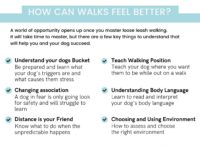
Why does my dog pull? I must get asked this multiple times a day, here’s some things as an Epic Pet Parent you should be mindful of when walking with your dog.
Going out on an adventure with our dog to the local park or to a new and exciting location generally involves proximity to you.
My criteria for a lovely calm walk is either the lead is relaxed and does not have any tension and when off lead our dogs can listen and focus on us in the environment.
For some people they don’t have any preference when lead walking for where the dog needs to be as long as the lead is loose, I like my arm in the socket. While others prefer to have their dog next to them or to never forge ahead of them. There is no right or wrong. In this instance, it comes down to personal preference. Some factors to consider are what the purpose of the walk is, where the walk will take place and your dog’s size.
For recall, safety is the name of the game here, close proximity or responding to me as soon as I call them is ESSENTIAL.
Some people believe that when a dog walks in front of them, the dog is trying to dominate them. This is not true at all!

Most of the time, the dog has just not been taught what the criteria for loose lead walking is.
If you have a preference of where you want your dog to be during a walk, you’ll want to be consistent with that from the start and pass on the instructions to everyone else who walks your dog.
If you have a larger dog you may want your dog to walk behind you so that you can both fit on the pavement and other people can pass if needed.
When you have a smaller dog, teaching your dog to walk in front of you might be preferred. This way you can keep an eye on your dog, especially if something unexpected happens.
People who walk their dogs in a city, may prefer to keep their dogs beside them and to check in more frequently.
When your dog can walk calmly on their lead without pulling or lunging, your walks will become much more enjoyable.
Why Won’t My Dog Listen
There are many reasons why your dog pulls and can’t respond to you, but here are just a few for you to consider:
It works – this is the most common reason. Most dogs will continue to pull because their natural walking pace is faster than ours and walking at a human’s pace is very unnatural for them. They have learnt that pulling gets them where they want to go.
Over arousal – your dog might be overexcited so can’t listen easily to you or have excess energy that hasn’t been used up in a way your dogs’ breed requires. Genetics can affect your dog’s energy level, and it’s important to meet their needs through breed-appropriate outlets.
When your dog is over-aroused, it’s impossible to teach them anything let alone expect them to walk nicely at your pace. So, if you have a dog with excess energy, you’ll want to find a way to use some of that pent-up energy in a constructive manner beyond going for a walk or throwing out a ball in the garden. What was your dog born to do? How can you give them an outlet for this natural behaviour? If you’d like to understand this more it requires you to go BE’yond the Basics after you’ve built the FUN’damentals, if you’d like more details on how you do that, you’ll love my Monthly Members area where we dive deep, read through BE’yond the Basics. You can also join my Free Group with lots of TIP’s & TAILS for Adventures with your Dog
Over-the-top reactions – your dog has a strong emotional response to certain things in the environment that is causing overreactive behaviour. For example, your dog may see another dog across the street and desperately pull towards them, trying to play. Or a skateboarder rides by and they may pull in an attempt to chase. They may also pull, bark and lunge to drive things away that they are worried about. If you notice your dog has an overreactive response to certain things, you’ll want to help them change their feelings about those things. You should seek help from an experienced dog trainer or behaviourist, if you’d like to chat further about this area, please book a connection call HERE
Fear– your dog might be fearful or anxious about being outside or in a new environment. They could be pulling because they don’t feel safe and want to move somewhere away from everything that worries them. Seeking the right support for you and your dog is so important if your dog is unhappy about walks due to fear.
Deep Dive into YOUR Dog

Equipment is also a really important part of developing the skills.
I have different leads and harnesses for different jobs, I love any lead that has various points to change the length and functionality of the lead like Ezy Dog Vario Range with a LITE version for smaller breeds.
Long Lines are also great when teaching anything to do with Proximity, I currently LOVE my gripped leads which you can find HERE .
I also prefer a Harness for any walks, especially when teaching a dog the early stages of Walking Calmly on the Lead.
I know a novice learner will have times of pulling and I’ll always try to avoid any discomfort.
I use both Perfect Fit (I’m also an approved stockist) and Ruffwear Front Range as they both have a front clip which I like to use so I have 2 points of connection when supporting any learning about walking calmly on the lead.
How Do I Get Started
If you are struggling with where to start, these are great areas to start to work on, you can find out more in my FUN’dametnals Plan which is all about laying down those all-important basics to then build on. Find out more HERE
Let’s get our arms back in their sockets where they belong, understand our dogs and help them develop skills relevant to them so Adventures are more enjoyable and safer.
If you would like to work on this either via a group setting or one-to-one coaching locally in the West Midlands, book a call to discuss how it works here.